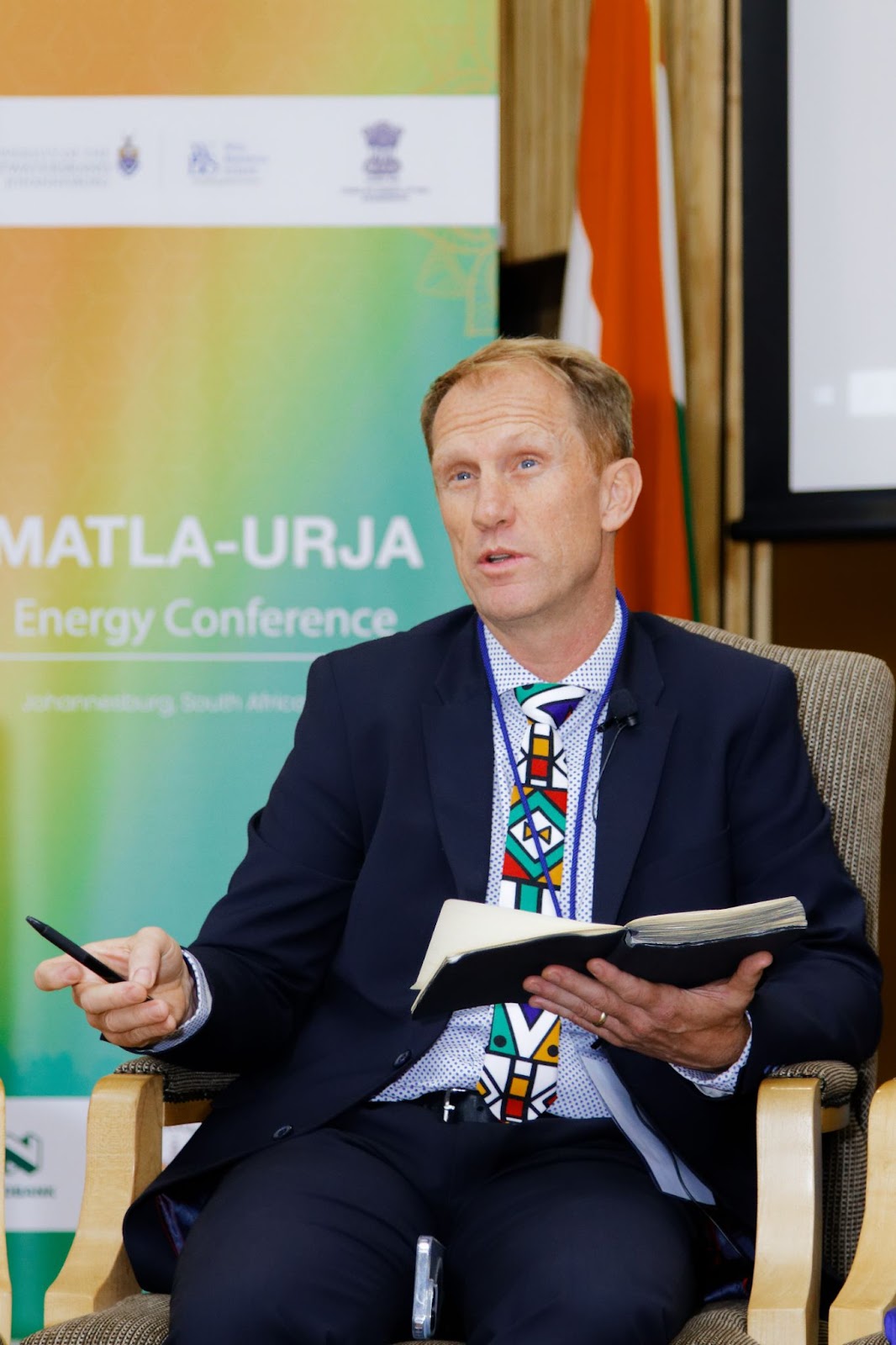Awdhesh Yadav, Chief General Manager, Indian Central Energy Regulatory Commission (CERC)
Two nations at different stages of energy transformation converged at the Matla-Urja Energy Conference to share insights into power sector restructuring and renewable energy integration.
Representatives from India and South Africa, Awdhesh Yadav from the Central Energy Regulatory Commission (CERC) and Mr James Mackay, CEO: Energy Council, outlined comprehensive strategies for transitioning from traditional power systems to sustainable energy networks driven by policy innovation and private sector engagement.
Yadav highlighted India’s transformative journey from fragmented regional grids to a unified national electricity system. The country successfully integrated five previously disconnected regional networks into one cohesive grid operating at a single frequency.
The unified Indian national grid enables power transfer between surplus and deficit regions while accommodating significant renewable energy capacity. India now boasts 152 gigawatts of renewable energy capacity with projections indicating 64% non-fossil fuel generation by 2030.
India developed a multi-layered regulatory ecosystem incorporating central and state governments policy frameworks complemented by statutory planning authorities. The Central Electricity Regulatory Commission (CERC) grants licenses for electricity transmission and trading while promoting power market development.
Power exchanges now facilitate approximately 13% of India’s total energy trading volume with expectations to reach 25-30% in coming years. The day-ahead market operates on 15-minute time blocks enabling granular energy transactions.
 James Mackay, CEO: South African Energy Council
James Mackay, CEO: South African Energy Council
“I think it’s very important in the South Africa context that we recognize where we come from. Without going into the details we must remember state capture, COVID, KZN riots in 2021, load shedding through 2022 into 2023 and a really big collapse in our transport and logistics system. Add to that investment downgrades and you can see that we didn’t have a destination, we really didn’t know where we’re going,” said Mackay.
Now that the country has a destination, the fact that the country aims to invest R2 trillion to transform the power sector over the next decade with 80% expected to come from private sector investments bodes well for the future.
Mackay noted that key focus areas must include building generation capacity across wind solar battery and gas technologies while simultaneously reforming transmission and distribution infrastructure.
Both Yadav and Mackay spoke to the importance of advanced transmission planning as integral to the integration of renewable energy into the grid. India’s strategy includes identifying potential renewable energy zones, facilitating generator interconnections, implementing network access regulations and aggregating demand to achieve economies of scale. These measures reflect the need for robust infrastructure and coordinated planning to maximise the benefits of renewable energy projects and ensure grid stability.
Both speakers also pointed to the importance of cross-border collaboration and knowledge sharing in addressing renewable energy challenges. India proposed expanding grid interconnections as a solution to intermittency issues associated with renewable sources.
The discussion further demonstrated that a successful energy transition requires more than technical advancements. It needs policy and regulatory certainty, institutional capacity, strategic public-private partnerships and socially equitable outcomes to create sustainable and inclusive energy systems.
Both Mackay and Yadav identified 2025–2026 as critical years for the local energy sector. Key risks like Eskom’s financial sustainability, growing municipal debt and the urgent need to accelerate battery storage and gas power development would all need to be carefully managed.